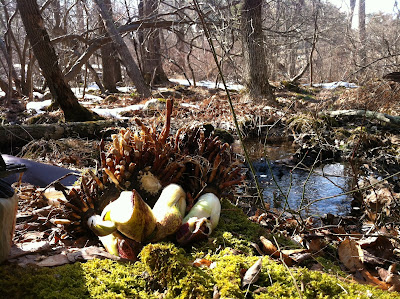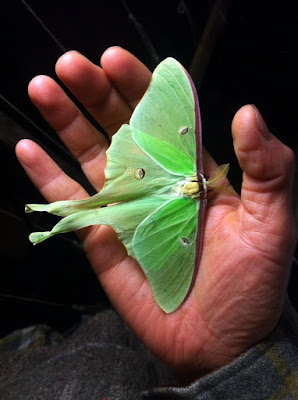The five phases organize life into five archetypal energies
that can be applied to different systems, including the body, seasons,
directions, life cycle, and more. The relationships between these phases forms
one of the foundational bases of Chinese medicine. Water nourishes Wood, which
burns as Fire, whose ashes turn into Earth, where Metal is extracted, the
minerals forming Water, which then continues the cycle all over again.
水 (Water)
Water is the mother of life, dripping down from the sky in
small droplets into streams that flow into vast oceans. Water surrenders to the
unknown, always drawn downward to the lowest point, by gravity. Floating in the
vastness of the ocean, anything can happen. Unbalanced Water can manifest as fear:
fear of the unknown in every moment. Water in balance manifests as
preparedness. In the north, place of the unknown, where the coldest winds blow
from, sits Water, and the energies of winter. Winter is the time of
hibernation, storage, silence, and preparedness. Our energies draw inwards, and
a stillness and yin nature permeates
our beings. In this place, anything can happen. In the course of a life, the
north, Water, and winter represent the place between death and birth. This is
the place of distillation and integration, of endings and preparing for new beginnings.
It represents the great mystery: where do we go after death? Where do we come
from, before birth? Where am I going, now? Water holds these mysteries in its
flowing, quiet ways that compose 80% of our physical bodies, and the part of
our nature that questions the meaning of life, while maintaining connection
with our pre-natal Qi (our jing 經 essence),
and our will to survive.

木
(Wood)
Wood is the bursting, rising, upward, yang, moving, manifesting, forward momentum, excitement, and
birthing possibilities of spring. The energy of the East, of the rising sun, of
the beginning of all things, of each breath and each moment, arise here. In balance,
Wood energy is directive and purposeful, getting things done, knocking out amazing
projects left and right. Out of balance, Wood energy can be overly angry and
aggressive, like a plant growing out of control, and wreaking havoc. In the
life cycle, it represents birth: new beginnings, and infinite possibility. This
is the place of excitement and inspiration, moving forward into orientation and
motivation. Wood governs the Liver, which makes decisions. It governs our 魂 (soul), which connects
with our goals and higher purpose, actively manifesting that into this material
world. How can we channel our energies in a powerful and focused manner, to achieve
our desired goals? Wood moves forward and outward in bursting growth, like the 2
million cells birthing and dying each second in our bodies.

火
(Fire)
In the middle of the day, the sun is at its zenith in the
sky. It’s the hottest part of the day, like summer is the hottest season of the
year. Here in the south, in the place of Fire, all is in motion. All is at the
height of its yang energy. We move,
run, jump, explore, play, and celebrate. Fire connects with the Heart, which
connects us to our communities, the world around us. The Heart connects with
our Spirit (神), which
further connects with our life purpose, and how we connect that with the world
around us, moving that purpose into the world through our actions and
communications. In balance, Fire energy is playful, active, passionate, juicy,
charismatic, engaged, and energized. Out of balance, Fire energy can be manic,
scattered, chaotic, and soap-opera dramatic. This is the place of focus and
perspiration. In the life cycle, it’s the time of adolescence, youthful
exuberance and bounding life explorations, active explorations of all the possible
ways to live fully alive. The heart pumps 1/3 cup of blood with each beat,
drawing energy and life force to our entire body, the Fire literally coursing
through our veins. What are we passionate about? How do we express our
passions?

土
(Earth)
In the Pre-Heaven diagram of the five phases, and the
Heavenly Stems and Earthly Branches (天干地支) diagram, Earth takes care of everyone as the solid ground
that holds all else, sitting in the middle of all of the other phases. It also
sits in the transition period between each of the phases and their
corresponding seasons. In the Post-Heaven diagram of the five phases, how we
commonly view the 生剋(sheng-ke )cycles, Earth
is placed between Fire and Metal, in the southwest, in the season commonly
known as Indian summer, right between summer and autumn, when the shadows are preparing
to lengthen, the plants are at their greatest height, and it’s time for relaxation
and internalization, harvest and celebration, drawing community together to eat
the fruits of the summer’s harvest. Dust to dust, Earth to Earth, our bodies
are made of this very Earth, and made ever more Earth with each bite of food
that we take, which is nourished from Earth, too. Governing the Stomach and
Spleen, Earth relates to digestion and nourishment. In balance, Earth energy is
loving, nourishing, practical, grounded, and caring. Out of balance, Earth
energy can be needy, stagnant, slow, worrisome, and messy. Governing the 意(consciousness), we ask ourselves how we
can be of service. What is our role in our community? Who are we, in our
relationship with the greater whole?

金
(Metal)
The sun sets in the west, in the place of Metal, the autumn,
when everything is composting back into their original nature, and death is in
the air. Here, the veil between the worlds of living and dead draw thin. The proximity
to death connects us with our own mortality, and the inherent understanding
that suffering is a part of life. Relating to the Lungs, Metal governs
inhalation and inspiration. Relating to the Large Intestine, Metal also governs
releasing what no longer serves us, and expiration. Here, in this place of
release and reflection, we let go. In balance, Metal is clear, precise,
organized, and discerning. Out of balance, Metal can be cold, unfeeling,
detached, distant, and lost in grief. Metal governs the 魄 (corporeal soul), or
animal nature. This animal nature recognizes what is true, real, and correct,
resulting in clear and fair actions, clear discernment. It also connects with a
sense of the sublime, of the ceremony, and sanctity inherent in each moment. Metal
draws clears lines, and asks what am I? What is not me?

We contain all of the phases and their corresponding patterns
and qualities within ourselves. But, we are born with proclivities toward
certain phases, and their inherent gifts and downfalls. Environmental and other
life factors may pull us in the direction of other phases. Our natural
tendencies can be our greatest weakness or strength, depending on how we dance with
those energies. Let us live powerfully and beautifully, noticing, observing,
and carefully designing and sculpting our lives as we choose, in line with our given
tendencies. Like the bones and muscles of the arches of our feet that use the
perfect balance of tension and compression to withstand the 100+ pounds of
weight bearing down on them daily, we stand poised between our various internal
and external forces to live a life suspended between Earth and Sky, at once
grounded and uplifted, manifesting our life purpose, buoyed from within and
without by the five phases that reflect the universes within universes, as the
universe itself.
References
Harriet Beinfield and Efrem Korngold, Between Heaven and Earth: A Guide to Chinese Medicine
Gary Dolowich, Archetypal
Acupuncture: Healing with the Five Elements
Angela Hicks, John Hicks, and Peter Mole, Five Element Constitutional Acupuncture
Ted Kaptchuk, The Web That
Has No Weaver
Maoshing Ni, The Yellow
Emperor’s Classic of Medicine
Nigel Wiseman and Andrew Ellis, Fundamentals of Chinese Medicine
J.R. Worsley, The Five
Elements and the Officials
John Young, Ellen Haas, and Evan McGown, Coyote’s Guide to Connecting with Nature












